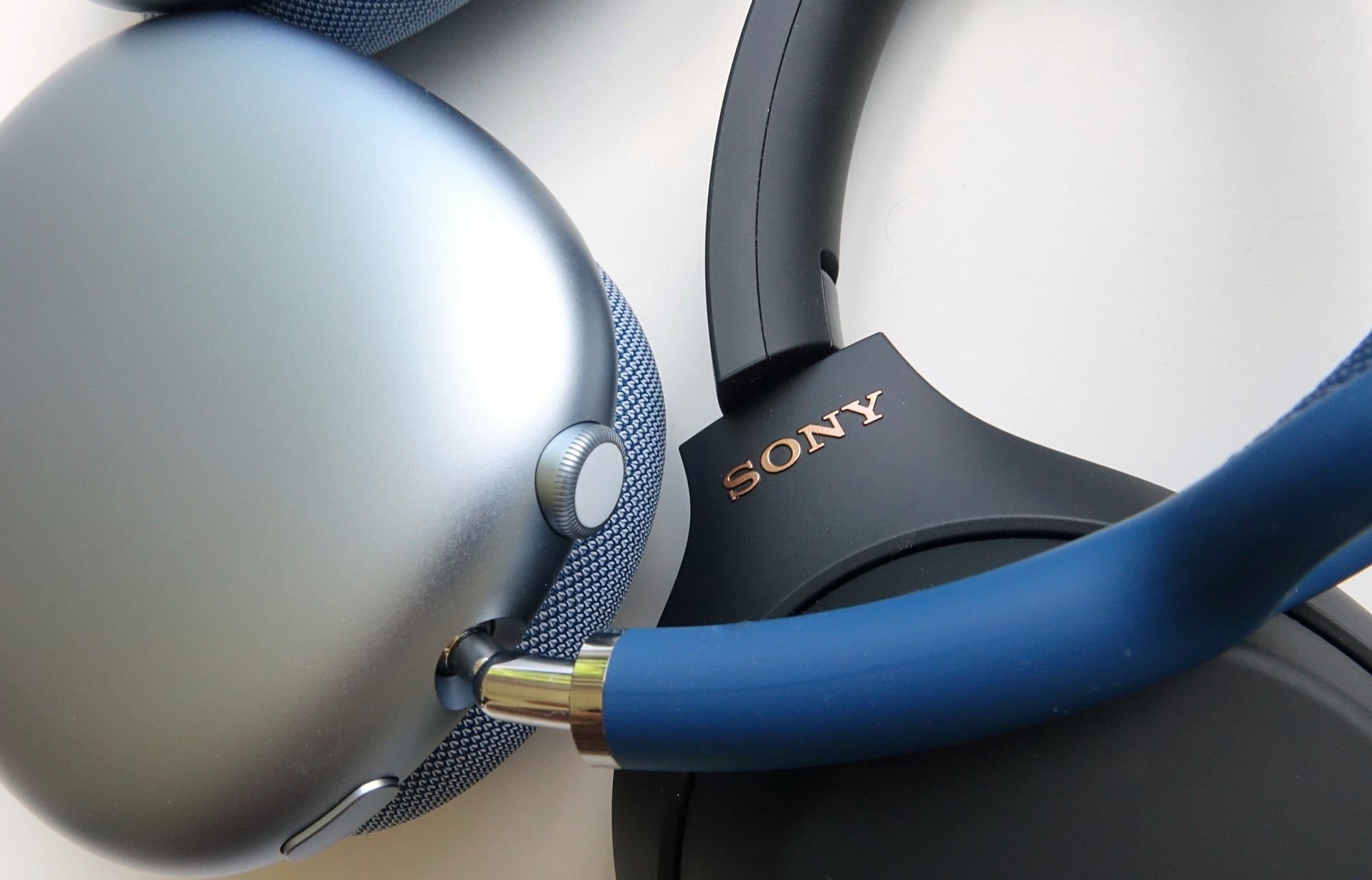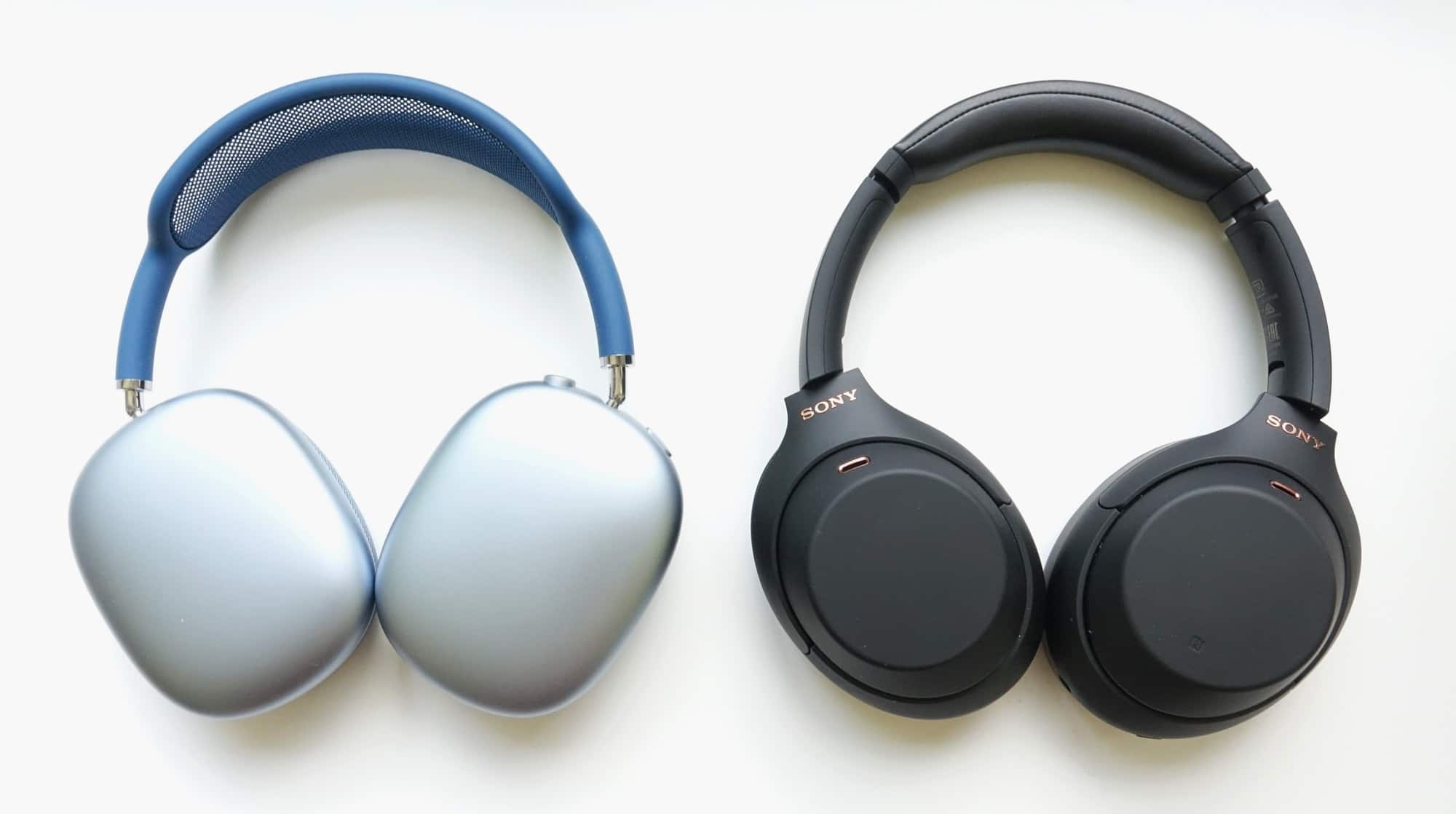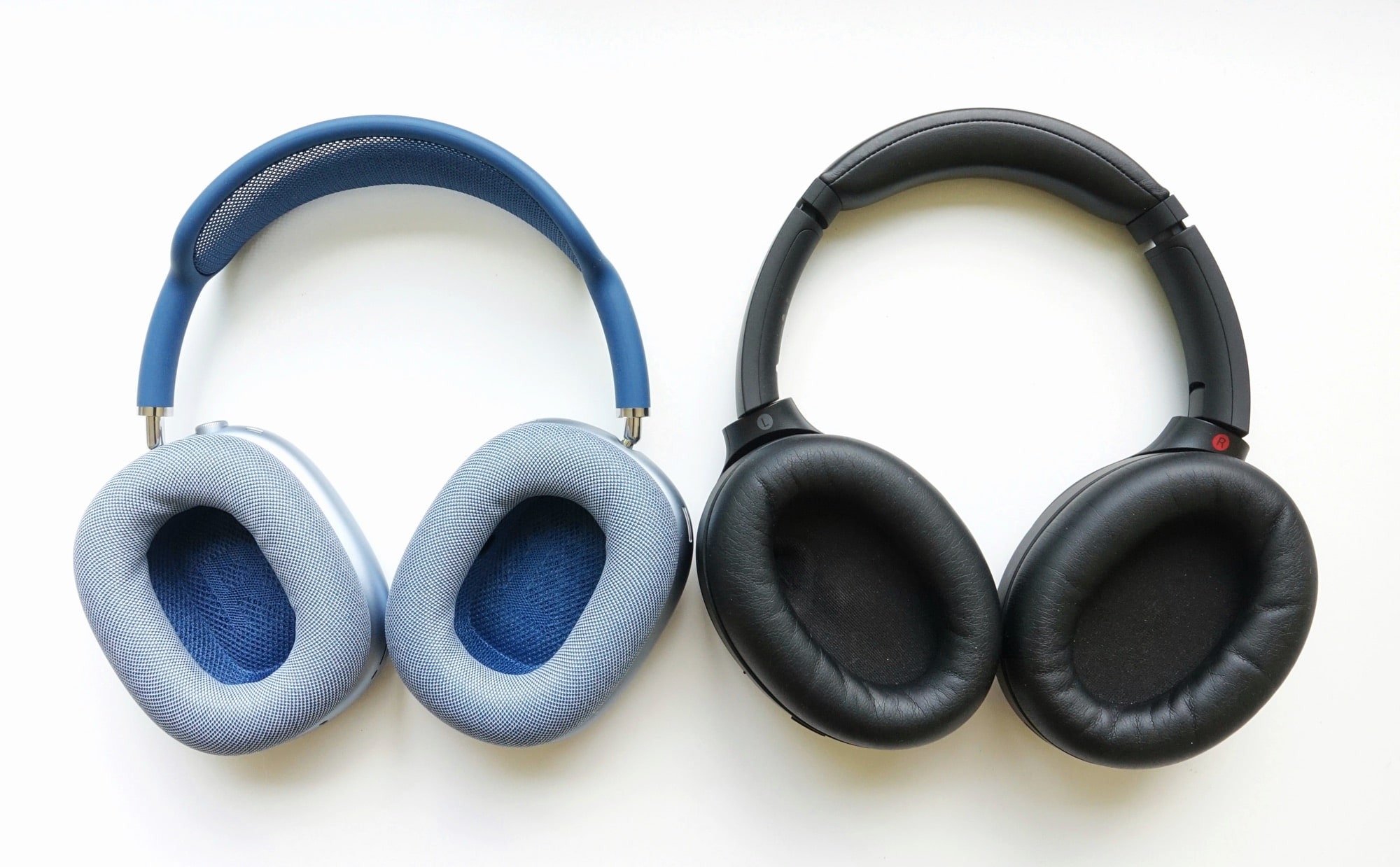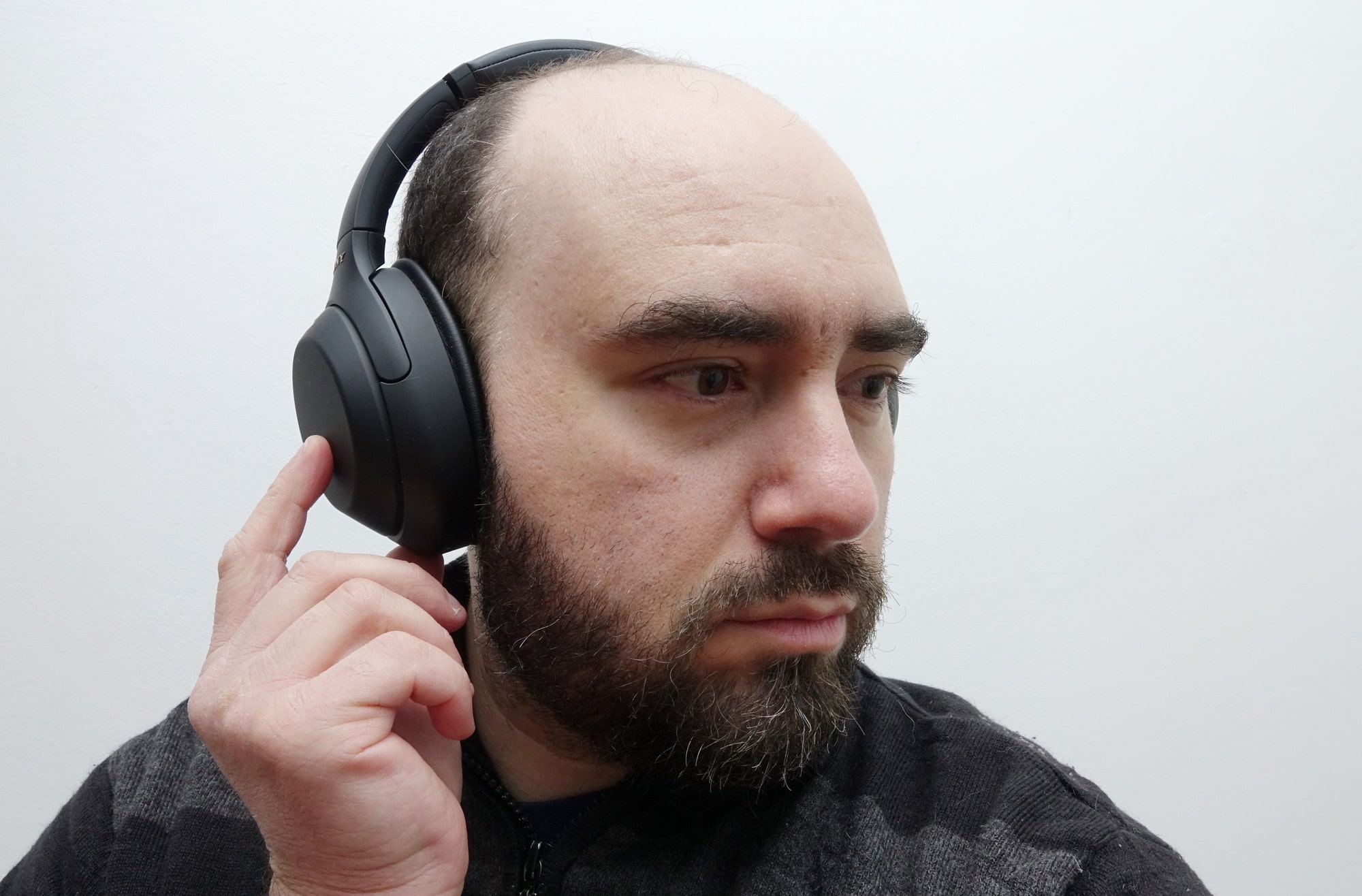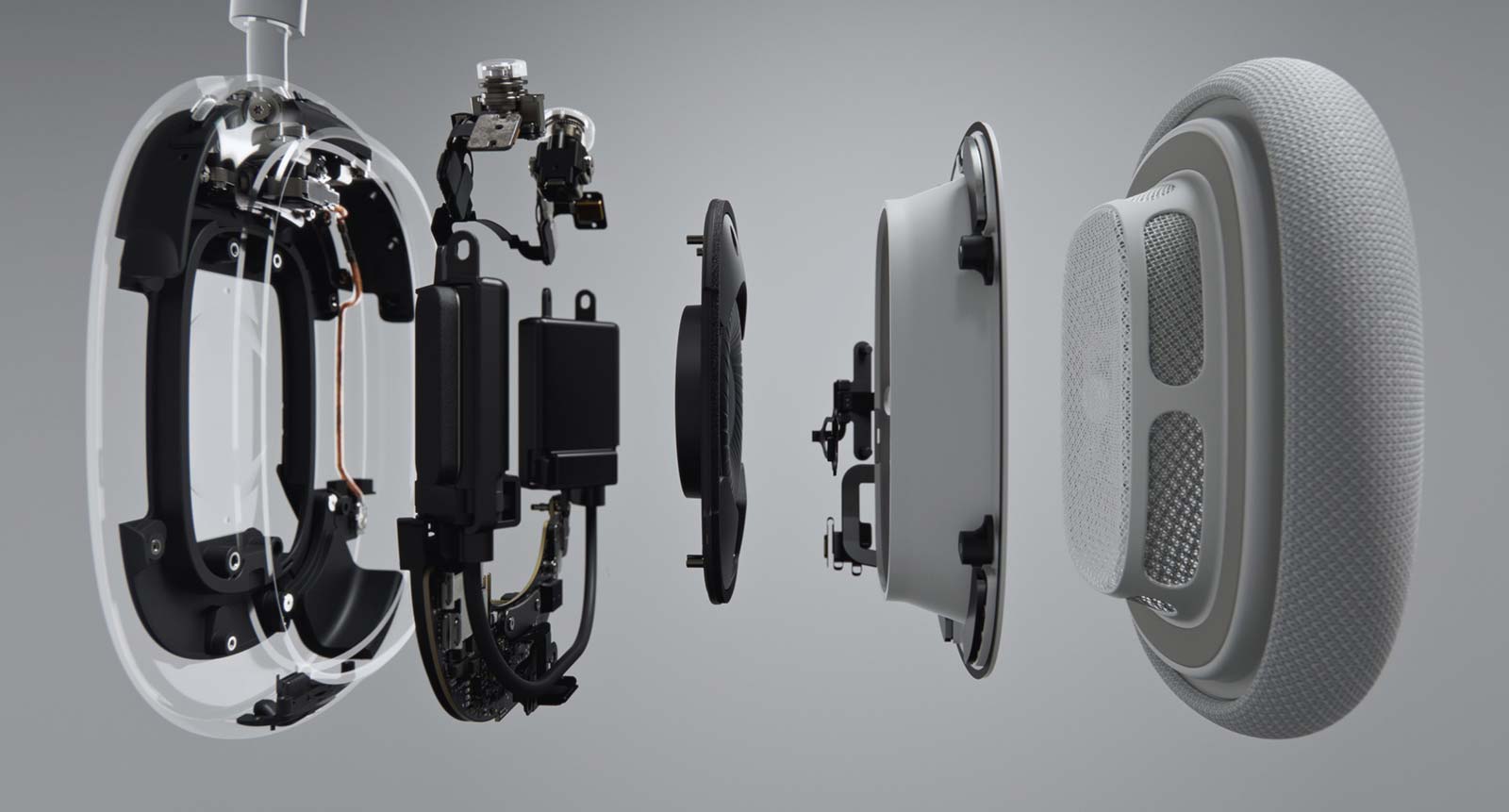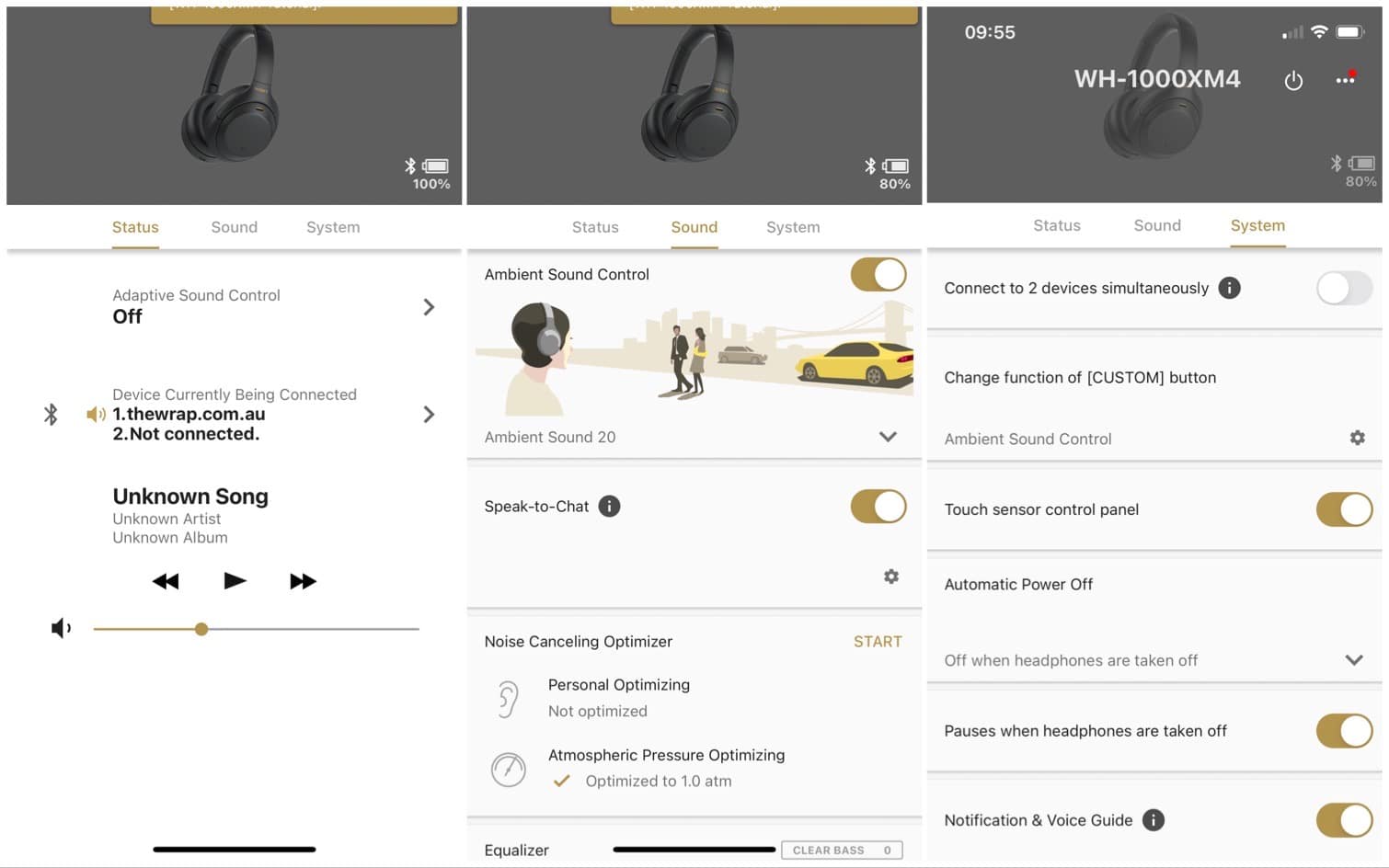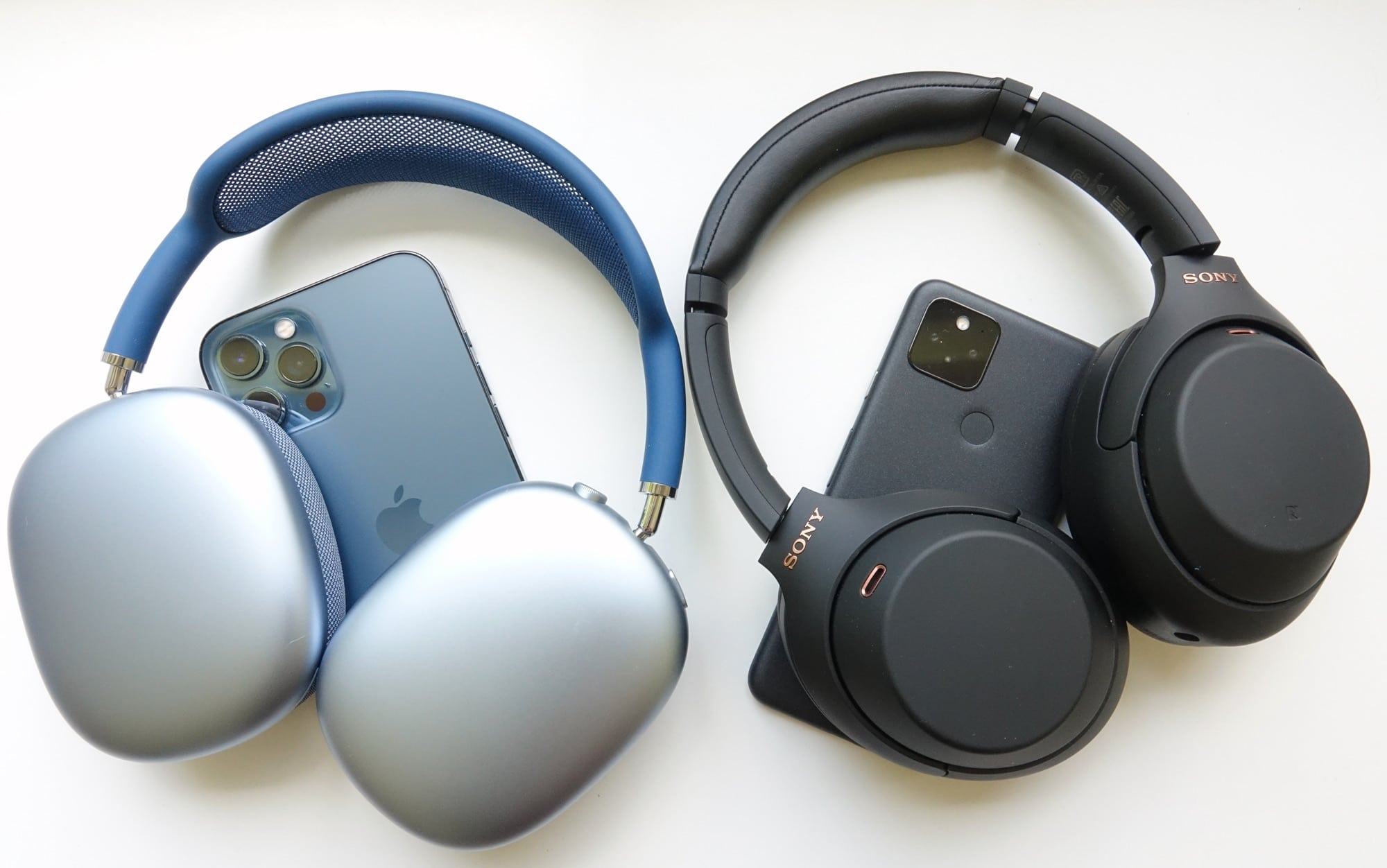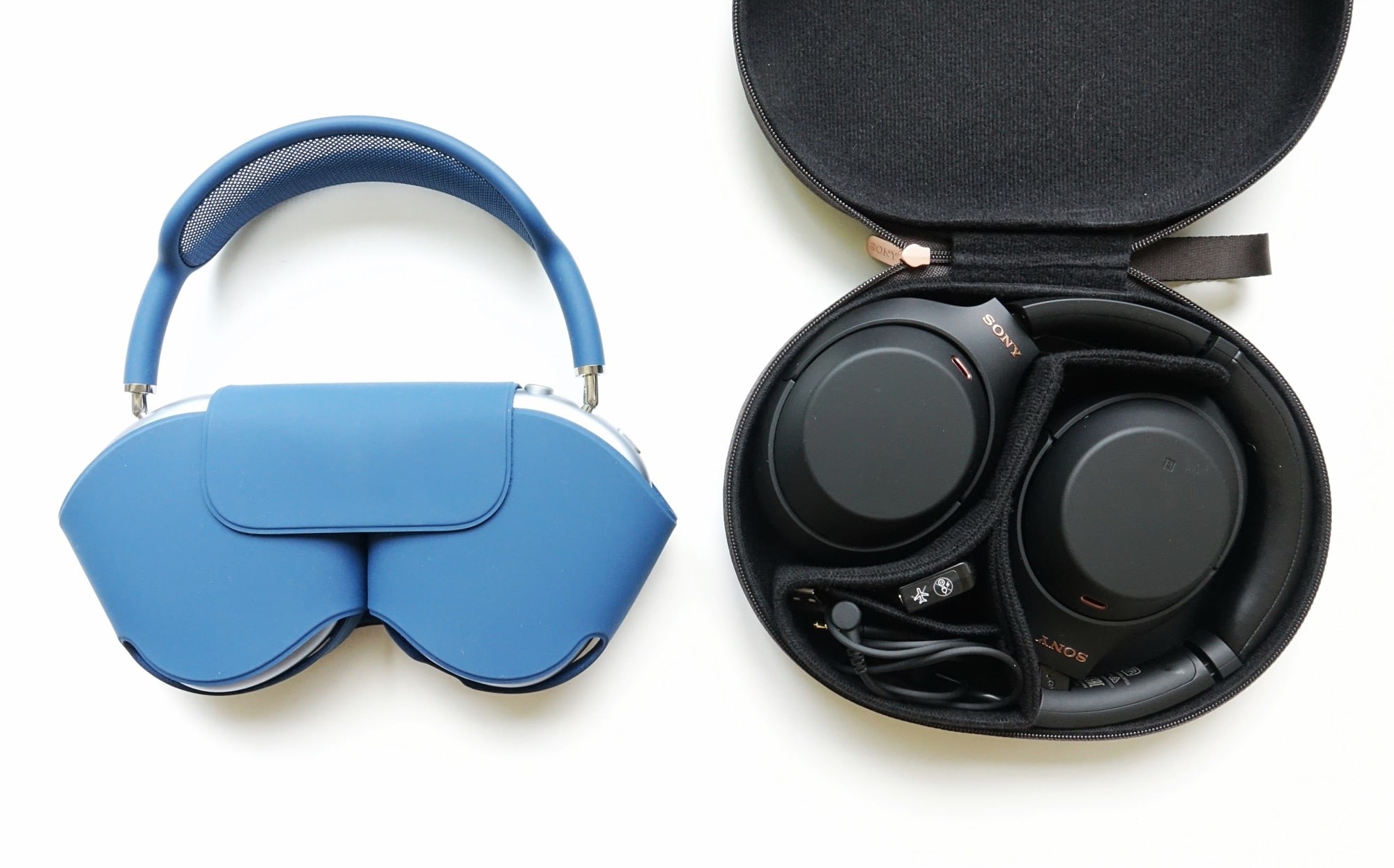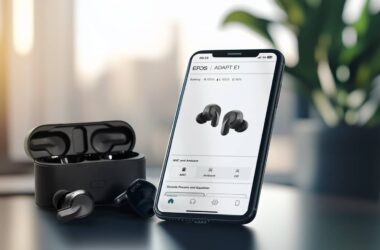There’s a new breed of noise cancelling headphones in town, and it’s time for a fight against the benchmark. Which is better: Apple or Sony?
At the end of this year, Apple made the choice of noise cancelling headphones a touch more complicated, announcing a pair of headphones sporting some high-end tech, but paired with a high-end price.
It’s an interesting release, not just because the price can feel overly harsh, but because it comes in a year where Sony released a pair of something similar which helped solidify its lead in the category.
Before 2016, Bose had long been the dominant force in noise cancelling headphones, constantly leading the game with its QuietComfort range, headphones that helped it pioneer the category. But at IFA in 2016, Sony started moving things in its direction, and since then, we’ve seen Sony take the category with a clear force.
Don’t get us wrong, Bose still makes great noise cancelling headphones, but Sony’s sound better, and feel like they’re adaptive to an evolved take of noise cancelling headphones.
Then this year, Apple decided to enter the market as well, launching the $899 AirPods Max. And as we learned in our AirPods Max review, they are something.
So that leads us to the fight, and the question of which is better: the Sony WH-1000XM4 or the Apple AirPods Max?
We’re taking this category by category to work out who has the clear lead, and which will work best for your ears and wallet.
Design
Let’s start this with design, because there are come clear differences. Both look like headphones, but both are clearly different, with Apple going for that premium metal and textile aesthetic it’s known for, while Sony’s headphones look like a more classic take on headphones, but slightly evolved.
There’s no confusing these two models, for sure, with Sony taking the classic headphone look and applying a smoother look to it, evolving the style slightly to make something familiar, but newer. Smooth plastic with a matte surface that doesn’t draw too much attention, and is easy on the eyes.
It’s a distinct look from Apple’s approach, which does the opposite and draws attention with a shiny aluminium casing, colourful band, complete with textile knitting on the cups and band alike.
Both the Apple AirPods Max and Sony WH-1000XM4 are good looking pairs of headphones.
Winner: Tie
Durability
While one is clearly a classic headphone design and the other is a touch more modern, one of these feels a little more durable than the other: Apple’s AirPods Max.
Thanks to an aluminium casing and a stainless steel arm, the headphones feel more durable, especially over the plastic body of the WH-1000XM4.
We’ve not tested dropping either of these headphones, and don’t recommend you do either, but if we had to go by material choice alone, Apple would likely be the winner in this category.
Winner: Apple AirPods Max
Comfort & Fit
Large and spacious earcup designs with memory foam in the construction adorn both pairs of headphones, though both arrive with over-ear circumaural designs, so make sure you’re happy with that.
We typically find circumaural’s “around-the-ear” approach (that’s basically what the term means) is easier on comfort than the supra-aural “on-ear” design, and both the AirPods Max and WH-1000XM4 work in line with that, providing several hours of comfort that requires little breaking in.
Throughout our time with each, we’ve found the XM4 and AirPods Max could be worn for several hours straight with no problems, making it hard to call a winner here.
Winner: Tie
Controls
While both are comfy, both headphones also support pretty great controls, as well, different as they are.
Apple has gone for a deliberately old school approach, using the design from its Apple Watch as inspiration, and allowing you to dial in volume using an actual dial, while the dial’s button acts as a controller. The second button next to them is a button for switching between noise cancellation and transparency mode, to let you hear through them. All of these controls — all two of them — are on the right can.
Basically, Apple’s AirPods Max have simple controls that are easy to master.
Sony’s approach is delightfully modern, using touch controls to let your hands to do the talking, so to speak. It all happens on the right ear pad, too, so that’s where you’ll do everything. Swipe up to lift the volume up, and swipe down to bring it down. Swipe forward (from the back of you to the front) to go forward a track, and swipe the opposite way to go back. Double tap to pause and play. Hold your hand to the right can to switch to ambient mode temporarily, or for as long as you want to have it on.
Essentially, Sony’s WH-1000XM4 has modern controls that are easy to master.
Both even play stop the sound when you take your headphones off, and start it up again when you don them, and you can turn this feature off on both headphones if it doesn’t work for you or you don’t like it.
To put it simply, both sets of controls are different, and yet both are as good as each other.
Winner: Tie
Connection & relability
They’re also both reliable, providing consistent wireless connections regardless of what you use thanks to improvements in wireless technology.
We’re not going to squabble over the minor differences between how the Apple and Sony wireless chips work, as we found them both about as solid as each other in our reviews.
Winner: Tie
Sound quality
And both headphones offer impressive sound, and that’s not just thanks to the expertise each company lends, but to some of the hardware.
Both the Sony WH-1000XM4 and Apple AirPods Max offer 40mm drivers, a detail you can find at both Sony’s spec listing and Apple’s press release for their respective products.
They’re also both matched with some solid audio processing technologies, different as they are. Sony uses a 32-bit digital-to-analogue converter (DAC), the Digital Sound Enhancement Engine “DSEE”, and the QN1 chip, while Apple uses an H1 chip not dramatically different from what can be found in its phones in each of its ears. They’re both very capable, and it all comes together for solid sound overall.
It’s impossible to decide a winner for us here, because the sound quality is different between each. In the Sony WH-1000XM4, the headphones produce a delightfully balanced yet warm delivery, similar to what you might get from a classic speaker, which is something we love. Meanwhile, in the Apple AirPods Max, you’ll find an overwhelmingly balanced soundstage with a remarkable attention to bass, and an ability to drive the volume that much louder than near everything else we’ve tried.
The sound between them is different, but one isn’t better than the other. That’s a point we need to stress. Each of these headphones sounds amazing, that’s all there is to it.
Winner: Tie
Noise cancellation
They’re also just as good as each other for noise cancellation, as well, at least based on our tests.
In Sony’s headphones, the noise cancellation is strong and one of the world’s best, even utilising a feature of the app to let you adjust the cancellation based on altitude and headphone fit — something you could find in both the XM2 and XM3 in the past — while this year introduced a noise cancellation feature guided by geolocation, allowing you to set parameters based on how noise cancellation was processed based on places you went.
It means if you have a regular cafe you like to go to, or a shop you’re often wearing your headphones at, the noise cancellation could automatically switch to one of the variations of cancellation, opening up to ambient modes, and cancelling the noise, but letting some voice in, or even closing up everything. This is a type of adaptive noise cancellation technology, but one that you set the boundaries of, and where you tell Sony to trigger the adaptive settings.
Apple’s noise cancelling approach is more of an automatic adaptive technology, which wins kudos from us, as well. We suspect it’s an improved variation of what we saw in the Beats Studio 3 Wireless a couple of years ago, and basically uses the H1 processors to analyse background noise regularly to quell what’s being heard.
We haven’t found one to be worse than the other, and so we’re calling this one a draw.
Winner: Tie
Compatibility
Compatibility is an interesting question, though, because both headphones are Bluetooth, and so work with either phone operating system, Android and iOS. In fact, while Apple doesn’t make an app for Android — something that bugs us with other headphones — it’s less important in the AirPods Max: there aren’t really any features that would give you a reason to need an app on Android, and the transparency button on the headphones works in much the same way.
There are some minor differences as you jump between iOS and Android on the AirPods Max, namely how you miss the ability to change the direction of the Digital Crown and what the transparency button triggers between — something the iOS 14.3 update offers — plus you miss out on assistant control: holding down the Digital Crown on the iPhone triggers Siri, doing the same on Android doesn’t trigger the Google Assistant. Those are minor in the grand scheme of things, but worth noting all the same.
Apple’s AirPods Max do offer a really neat way of switching between Apple devices quickly and easily, much like they do for any Apple headphone, but Sony’s may have an edge in one dramatically obvious way: a 3.5mm headphone jack.
There are plenty of people that still prefer using a standard headphone cable, and if they’re flying or using an old school media player, or maybe just their computer, they have good reason. Unfortunately, Apple makes that a little difficult with the AirPods Max, and in line with Apple’s removal of headphones from its iPhone boxes, it has opted to exclude a headphone cable from its AirPods Max box.
In fact, if you want to plug in a pair of AirPods Max into a 3.5mm port, you’ll need to buy a bi-directional Lightning to 3.5mm cable from Apple for $55 in Australia. Meanwhile, Sony includes the 3.5mm cable, which is a standard 3.5mm to 3.5mm cable and very easy to replace if it breaks.
We think you can see who we’re giving this round to.
Winner: Sony WH-1000XM4
Battery
Battery scores another win for Sony, but not by a huge margin, with Sony’s latest pair having ten hours on its competitor, which may seem big, but isn’t a dramatic jump for everyone. And really, there’s another reason why Sony wins this.
You’ll find support for up to 20 hours of wireless playback in the AirPods Max, which is a solid start, while the Sony WH-1000XM4 nails up to 30. Ten hours might seem like a huge amount, but it can be dependent on how you drive the headphones, so we’re not seeing this factor as a major win.
However the Sony headphones can work as a passive headphone with its aforementioned 3.5mm cable when the battery runs out of power, and that is a win. It basically means they can work even when the battery is flat, though it will be without noise cancellation.
Winner: Sony WH-1000XM4
Case
The case is a category that isn’t hard to find a winner for, either. Whether you like the bra-like case of the AirPods Max and how it switches off the headphones for you — like the iPad Smart Covers, it’s a “smart case” that uses a contact switch to determine when the headphones are sheathed — it’s not as durable or protective a case as what headphones typically arrive with.
By comparison, the Sony case looks and feels like it can take knocks, and can even be attached to the outside of your luggage if you bring a carabiner clip. Apple’s, however, needs to go inside your luggage, lying flat, and taking up room for other things. There’s even a semblance of cable storage on the Sony XM4 case.
Between the protective design and the fact that it can go outside your baggage, we’re picking Sony as the winner of the case argument when comparing these two headphones.
Winner: Sony WH-1000XM4
Value
And like with the case, value is one that Sony wins hands down. There’s really no contest in this category.
While Sony’s headphones currently have a recommended retail price of $499 in Australia, the street price is closer to the $350 mark. At almost twice the RRP, however, and a little over it on street price, Apple’s AirPods Max are almost impossibly more pricey than Sony’s XM4, and that’s not a great thing.
We’re not entirely sure that Apple’s headphone price is a justifiable difference over the cost of what Sony’s headphones achieve, either, and that means based on value alone, Sony wins this category easily.
Winner: Sony WH-1000XM4
What should I choose: Sony WH-1000XM4 or Apple AirPods Max
Both pairs of headphones are excellent, and quite frankly, if you ended up on either, you’d find yourself with one of the year’s best pairs. But Sony’s headphones edge Apple’s out ever so slightly, and it comes down mostly to that price.
We can live without a decent headphone case, and Apple’s light bra-like protection is fine by us, even if it could be better. The battery life differences aren’t major, either, and Apple is pretty close on compatibility, though we’d love an app on Android if we could, much like what Beats offers.
But that price is a staggering difference, and one your wallet will notice.
The problem is this: with a recommended retail price in Australia nearing half of what the AirPods Max cost, and a street price closer to a third, Sony’s headphones are seriously solid value, something that is a much more difficult statement to make about the Apple AirPods Max. For an audiophile, the $899 price really isn’t a big deal, but compared against the current benchmark, there is a serious difference that’s difficult to overlook.
For that reason primarily, Sony wins this battle, but only barely. If Apple were to drop its RRP down a little more, it would be a much more competitive fight in that regard, and Apple might edge a little closer to victory. Given this is its first pair of over-ear headphones, that’s not bad at all.


